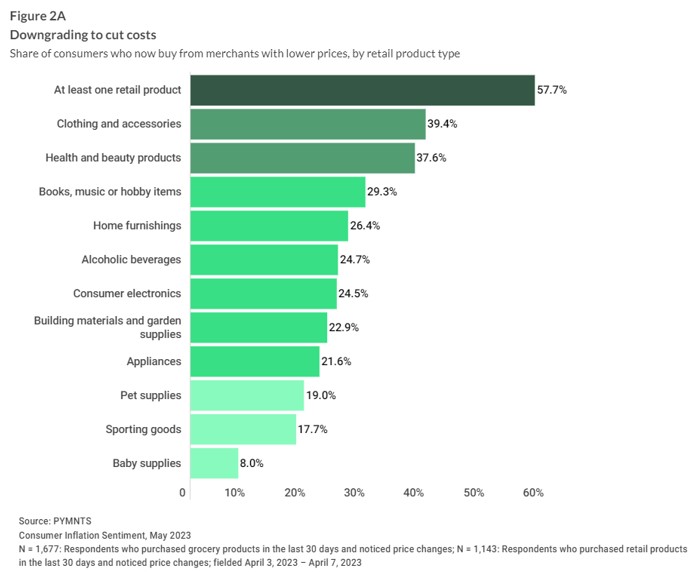
It has been another rough quarter for nearly all merchants and retailers, but especially for businesses whose main sales center around nonessential items.
Target’s much-anticipated quarterly earnings bore out much of investors’ fears, with a 3.4% drop in comparable digital sales attributed to a consumer pullback of purchasing discretionary goods. Additionally, stalwart retailer Macy’s has had its own share of revenue difficulties for Q1 2023. The retailer’s brick-and-mortar sales decreased 6% year over year, with digital sales off 8% during the same period. This has led to Macy’s revising its annual sales and profit forecasts downward, citing a deceleration in demand caused by inflation as the primary factor.

While startling, these earnings results may not be a total surprise. Data in PYMNTS’ May “Consumer Inflation Sentiment” report found that the top two categories consumers are cutting down on are clothing and accessories and health and beauty. Both of these are main revenue streams for both Macy’s and Target.
In each case, more than one-third of consumers now buy items from these product categories from a merchant with lower prices, meaning that pricing, not brand cachet, is their priority. Macy’s revised guidance in response to this shifted customer priority towards savings will also involve additional clearance markdowns in Q2 to address excess inventory as well as planned category composition and inventory-level adjustments to make up revenue shortfall. However, as the downward forecast projects, there are only so many markdowns a retailer may make before it impacts revenue.
Effects of this continued pullback with nonessential purchases extends past the brick-and-mortar retail sector. Buy now, pay later provider Affirm in May released its latest quarterly results, noting that consumer electronic purchases had declined 8% year over year. The home/lifestyle category also declined 10% during the same period, compared to a 2% growth the previous quarter.
It is these dips that may provide more insight than a broad look at the government numbers. For example, while the Commerce Department May consumer spending data demonstrates a reversal from previous months, a deeper dive details that the majority of this spend was on auto purchases. That, in turn, may be due to car prices starting to come down from their previously soaring heights and savings-seeking consumers consider a large purchase that for many may be considered virtually a necessity.
As consumers settle into this version of the economy, we may see earnings from discretionary retailers echoing similar numbers as those reported on for the most recent quarters. And the deep discount strategy employed by Macy’s and others leaves no guarantee of success or increased market share. It seems, at least for the near future, consumers and retailers alike are in for a bit more of a bumpy ride.